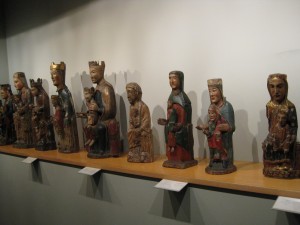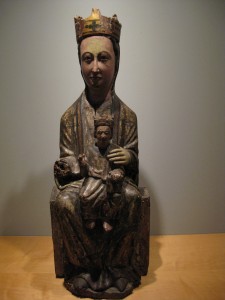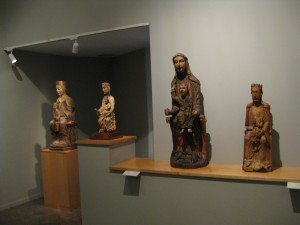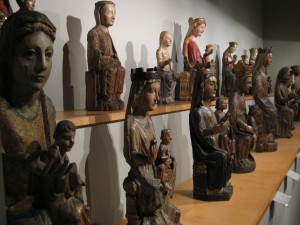It’s not so much each individual statue; it is the volume of them all there together. (You can click the photos for more detail)

When they were first painted and carved in the twelfth and thirteenth centuries, each parish church must have had one. They wouldn’t have ever seen then all massed together like we do, in this museum and at every episcopal museum in the country.


Some Marys have crowns, while others are simply veiled.

These weren’t the only objects Mares collected. The remaining floors of the museum are filled with rooms containing such random objects as pipes, fans and fan holders, holy water stoups, cigar bands, playing cards, images of Montserrat, scissors, bedpans, carved shells, candle snuffers, creche figures, and really anything else you could gather in mass between the Roman era and the early twentieth century.

Reading and Writing History and Fiction (and sometimes food)
Do you know the old work of Ilene Forsythe on the Sedes Sapientiae (have I spelled that correctly?)– thrones of wisdom? I’m fascinated with this genre of statue. More information on this museum, please?
I should check that out. I am fascinated by these figures, their message and their use. And the fact that you seem to begin to see them en masse in Spain when Queen Urraca begins ruling in her own right.
Frederic Mares was a sculptor at the turn of the last century who, he said, sculpted in order to be able to afford to buy more sculpture. The museum is located in part of the old royal palace in Barcelona, adjacent to the cathedral. It is well worth a visit when you’re back there next.
I spent time in the cafe there this summer — but never made it into the Museum. I’m chagrined!
Well, you’re just going to have to go back to Barcelona, aren’t you? It’s tough, but I’m sure you can cope.